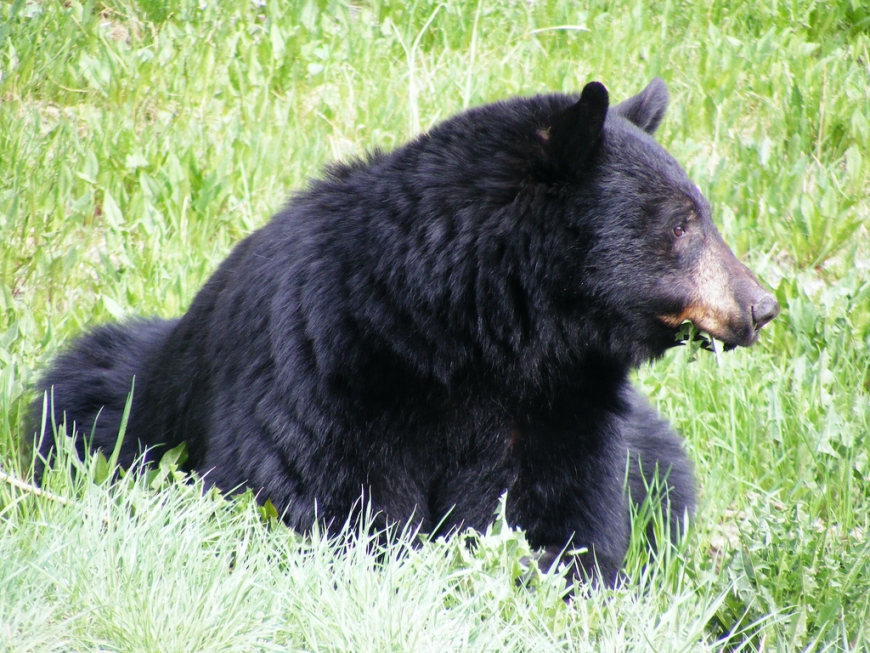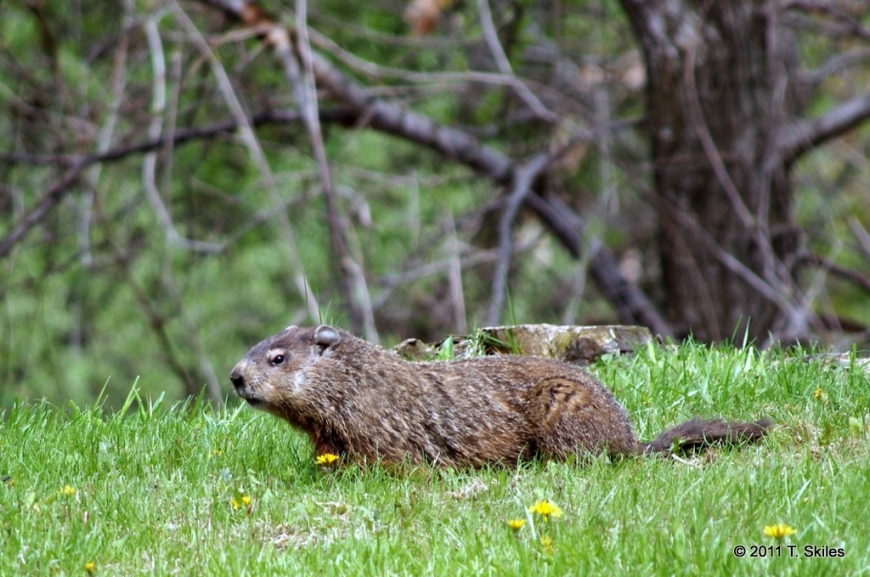



Time For Torpor!
It’s well known that bears go into hibernation for the winter, eating lots of food during the fall, sleeping in their dens through the winter, then reemerging hungry in the spring. However, the process is actually not that simple. Bears don’t even actually hibernate! Instead, they enter a state called torpor.
Torpor is a general term for a state of inactivity during which animals enter a deeper sleep that allows for energy conservation by slowing metabolic rates and decreasing body temperature slightly. Here in the North Country, some mammals that enter torpor include bears, raccoons, and skunks, but torpor is a strategy that is also used by animals in the desert to avoid heat, rather than cold. Hibernation, on the other hand, is a state entered to conserve energy and minimize need for food during the harsh winter. Hibernation is undergone by mammals like woodchucks, ground squirrels, some mice, and certain bats. You may be thinking that these two states of torpor and hibernation as being very similar. They both serve the same purpose of conserving energy and limiting exposure during cold weather. However, there are some key differences that set torpor and hibernation apart.
One difference is that animals in torpor can wake more quickly than animals in hibernation. Waking from hibernation uses a lot of energy, so it’s only done when necessary, typically every 15 - 30 days to expel waste. Waking from torpor uses much less energy and for some animals is done more frequently, but for others (such as bears) less frequently. Evolutionarily, easily waking from torpor is advantageous for animals who may need to defend their den, and for female bears who wake from torpor briefly to give birth to cubs.
The reason for this difference in waking speed is the degree to which the animal slows its typical bodily functions and lowers body temperature. In hibernation, breathing, heart rate, metabolic rate, and brain activity are significantly reduced in order to conserve energy, giving an animal in hibernation the appearance of being dead. During torpor the same functions are slowed, just not as much. Animals in torpor are closer to being awake than animals in hibernation, so they don’t need to expend as much energy during the transition. Now that we’ve covered the basics, let’s look more closely at the differences between woodchucks and bears' winter behaviors.
Woodchucks, members of the rodent family, enter hibernation in late fall and reemerge in February or March. They hibernate in burrows which range from two to five feet deep and can be up to 60 feet long. Characteristic of being true hibernators, a woodchuck's body temperature drops significantly during hibernation - from 99 to 37 degrees Fahrenheit! The woodchuck’s burrow is located below the frost line to help them survive the cold winter temperatures. Their breath slows to only two breaths per minute, and their heart rate drops from 80 to five beats per minute. To prepare, woodchucks eat lots of food in the months leading up to hibernation so that they have fat reserves to burn throughout the winter. Woodchucks have no need to leave their underground burrows throughout hibernation. They have specific “rooms” that they use for waste and store food in their burrow for when needed.
Bears also prepare for the winter by eating an excess of food to build up fat, a behavior called “hyperphagia.” Bears enter torpor in late fall, similar to woodchucks. Bears spend their winters in dens. These dens are not as extensive as woodchuck dens but each bear still works to make its den suitable. Bears line their dens with leaves and branches in order to insulate as much as possible against the cold. Unlike woodchucks and other animals who hibernate, bears do not wake up on a regular basis to expel waste. In fact, bears are able to go 100 days without eating or going to the bathroom! Unlike true hibernators like woodchucks, a bear’s body temperature does not drop very much during torpor, only dropping to about 88 degrees Fahrenheit from their normal 100 degrees. This shallow temperature change allows bears to remain in torpor for longer, as they don’t have to wake to bring their body temperature up like woodchucks do.
Torpor is something that not many people know about, but is a common process for many North Country species. Hibernation and torpor are similar and easy to confuse, but distinguishing between the two tells you more about the animals in our local ecosystems. Next time you wonder how animals spend their winter out in the cold and snow, be assured that they are likely snug in a den going through either hibernation or torpor.

